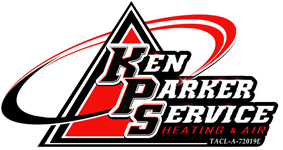What Are the Most Common Indoor Air Pollutants?

When you walk into your home, do you feel safe from the airborne particles that trigger allergies and other problems? Before you breathe a sigh of relief, you may want to know about the 10 most common indoor air pollutants.
1. Dust
Knowing if you have a dust problem inside your home is pretty easy. You can look at the surface of your furniture and the cloth that you use for cleaning. Unlike dust that you find outside, indoor dust is a bit more complex. It is a combination of dead skin cells, hair, dust mites, fibers, and other particles. If you were to put the dust in your northeast Texas home under a microscope, you might even find little pieces of soil and plastic. It is amazing how common everyday items somehow become small particles in household dust.
2. Pollen
If you have allergies, have you ever wondered why you sneeze and have watery eyes indoors? Chances are that you have the same pollen in your home that triggers your allergies outside. So, how does pollen get inside your home? Some may be brought in on your clothing and shoes, but much of it comes through doors and windows, as well as through HVAC vents. Your heating and cooling equipment relies on outdoor air to some degree, and the filters may not capture smaller particles, such as pollen.
3. Pet Dander
What exactly is pet dander? Fur babies add a lot to our lives, but they also contribute to indoor air quality problems. Pet dander is a combination of hair and dead skin cells that your pet sheds daily.
4. Viruses and Bacteria
Like pollen, viruses and bacteria find their way into your home through doors, windows, and your HVAC system. These particles can also linger in your home after someone is ill. Most people rely on surface cleaning to remove bacteria and viruses, but these particles also float through the air.
5. Mold Spores
Mold is a significant problem for homes in northeast Texas. Even in arid climates, there are many types of mold that can grow and thrive. Mold can damage your home, as well as cause some pretty serious health issues. Mold has been linked to respiratory illnesses, heart disease, and poor outcomes for people who live with chronic medical conditions, such as diabetes.
6. Odors
Whether you love to cook or have a smoker in your house, odors stick around long after the aroma is obvious. Odors are the result of particles in the air that make your home smell funny and can easily enter your respiratory system.
7. Chemicals
Household cleaners contain powerful chemicals to remove soap scum, dirt, oils, and other substances. These chemicals are released into the air. Breathing in chemical odors can cause watery eyes, congestion, runny nose, and even damage to the mucous lining of your nose, sinuses, and lungs.
8. Lint
Lint is a combination of fibers that are released from the textiles of your home, such as rugs, upholstery, carpet, and clothing. The fibers easily float through the air and can land on your furniture or cause a variety of symptoms. Another source of lint in your home is your clothes dryer. If the filter is clogged or the hose is poorly attached, the lint is released and circulated in the air.
9. Gases
Also known as volatile organic compounds (VOC), gases are released from paint, furniture, hygiene products, cosmetics, adhesives, pesticides, dry cleaning, and many other sources. VOC describes gases that are released from these items, such as formaldehyde. Sometimes the levels are so low that you cannot smell the gases, yet you can still experience physical symptoms.
10. Combustion Byproducts
Your heating system, gas stoves, and other natural gas appliances are designed to vent combustion byproducts outside your home. Unfortunately, the venting may not work properly, and you could end up with dangerous combustion byproducts inside your home. The most common is carbon monoxide, but you may also have soot and other airborne pollutants.
Residential Indoor Air Quality Solutions
Indoor air quality is equally as important as the air you breathe outside. The experts at Ken Parker Service, Inc. offer indoor quality evaluations and products to remove airborne pollutants to keep your family safe and healthy. Give us a call today to learn more. Be sure to ask about our heating and cooling services, including installation, maintenance, and repairs. We also offer ductless mini-split systems!




